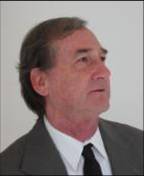 Adi Abileah ŌĆō Planar ŌĆō USA ŌĆō ŌĆ£3D Displays-Technologies and testing methodsŌĆØ Adi Abileah ŌĆō Planar ŌĆō USA ŌĆō ŌĆ£3D Displays-Technologies and testing methodsŌĆØ
Adi Abileah is Chief Scientist, Technology Group, Planar Systems, Beaverton, Oregon. His main activity is related to development of active-matrix liquid-crystal display (AMLCDs) and the physics and optics of the displays of several technologies, backlights, and enhancement techniques. He received his B.Sc. in physics from the Technion (Israel Institute of Technology) and M.Sc. in plasma physics from the Hebrew University, Jerusalem. He also performed two years of research work at the university on high-power CO2 lasers. He developed soil mechanics density sensors at the Negev Institute. His first industry job was in medical imaging (Nuclear Medicine) at Elscint, Israel. He was the head of the electro-optics group at Elbit for several years, and then the manager of EL-OP North Brunch R&D Center in Haifa, Israel. In 1987, he joined OIS-Optical Imaging Systems in Michigan where he became the manager of the optics group and responsible for all related topics in the development of AMLCDs. During this period he became expert in the optics of AMLCDs, testing techniques, and liquid-crystal physics. He served at OIS until the company closed at 1998. Since 1998, he joined Planar. He has 29 U.S. patents, mostly related to displays and backlights and presented many technical papers at SID, SPIE, and OSA conferences. In 2005, he received a Fellow Award from SID.
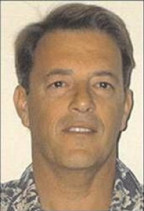 Bernard Coll ŌĆō USA ŌĆō ŌĆ£Current and future evolution of 3D TVŌĆØ Bernard Coll ŌĆō USA ŌĆō ŌĆ£Current and future evolution of 3D TVŌĆØ
Bernard F. Coll today is a consultant and was a Distinguished Member of the Technical Staff at Motorola Labs. After European and U.S. professional experiences he was joined the Motorola Phoenix Corporate Research Laboratory, in 1994 for the development of carbon and diamond related films and carbon nanotubes for field-emission displays (FED). His current interests are in the synthesis of carbon nanotubes for nanotechnology and large-area low-cost FEDs applications. He is the author of several publications and inventor and co-inventor of 20 patents in this field. In 2008 he received from Motorola the sign of ŌĆ£Distinguished InnovatorŌĆØ. He holds a ŌĆ£diplome dŌĆÖingenieurŌĆØ from ESME (Paris) and a specialization diploma in nuclear physics from I.N.S.T.N. (Paris) in 1980.
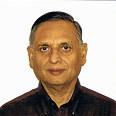 Birendra Bahadur ŌĆō Rockwell Collins ŌĆō USA ŌĆō ŌĆ£Direct Dry FilmTM Optical Bonding - A Low Cost, Robust and Scalable Display Lamination TechnologyŌĆØ Birendra Bahadur ŌĆō Rockwell Collins ŌĆō USA ŌĆō ŌĆ£Direct Dry FilmTM Optical Bonding - A Low Cost, Robust and Scalable Display Lamination TechnologyŌĆØ
Birendra Bahadur is an internationally recognized researcher on LCDs and Liquid Crystals, with 85 papers and 4 books published to date. Dr. Bahadur received his BS (1967), MS (Physics, 1969)) and Ph.D. (Physics, 1976) degrees from Gorakhpur University, India. He had an exceptionally brilliant academic record winning numerous gold medals, awards and scholarships. He started his research on Liquid Crystals and LCDs in 1969 for his Ph.D. thesis and, since then, has remained in the field of electronic displays. He has contributed very significantly to the development of the basic science and mass scale manufacturing technology of many types of LCDs, including dynamic scattering, dichroic, TN, STN, PDLC and active matrix displays. During his long LCD career, he developed and manufactured over 500 types of custom and standard PM and AM LCDs for avionics, military, telecommunication, agriculture, automobile, industrial and consumer applications. Many of those LCDs were the first or novel applications in their areas. The positions held by him earlier include: Research Fellow and Assistant Professor of Physics, Gorakhpur University (India); Senior Scientific Officer, National Physical Lab. (India); Vice President, Data Images (Canada) and Engineering Manager, Litton Systems Canada. Currently, he is working on high performance avionics and military displays and systems at Rockwell Collins Inc., Cedar Rapids, IA, USA. Dr. Bahadur has been a member of SID since 1982 and the International Liquid Crystal Society since its inception. He is serving SID Upper Midwest (formerly Minneapolis- St. Paul) Chapter as its Director since 2003. He also served the chapter as its Special Program Chair from 2002 to 2007. Dr. Bahadur has chaired and co-chaired many sessions at SID and IDRC conferences since 1994 and has been member of their program and scientific committees for a long time. He has been chair of SID LCT committee 1997, 2009 and 2010. He was awarded the prestigious SID Special Recognition Award in 1993 for his outstanding work in LCDs and was a Guest Editor for J. SID in 1999. Dr. Bahadur was a member of the editorial board of international journal Displays (1993-2006) and Adjunct Professor, University of Waterloo, Canada (1995-1996). He was also a member of the Scientific Committee of The International Liquid Crystal Conferences held in 1990, 1996 and 2000. He was a member of Institute of Physics (1982- 2004), Societe de Chimie Physique (1972- 1987) and Liquid Crystals Abstracting Panel (1978-1980). Dr Bahadur was a member of the ADEAC Program committee since its inception and chaired its Military and Avionics Display Sessions in 2004, 2005 and 2006. He is a member of the Editorial Board of Liquid Crystal Today (since1993), Foreign Fellow of Indian National Science Academy (since 1998) and Sr. Member SID (since 2009).
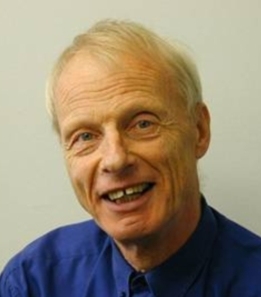 Daniel den Engelsen ŌĆō ABINFO - Brazil ŌĆō ŌĆ£Why do we need displays?ŌĆØ Daniel den Engelsen ŌĆō ABINFO - Brazil ŌĆō ŌĆ£Why do we need displays?ŌĆØ
Professor Associate at Wolfson Centre for Materials Processing at Brunel University
Senior scientist at Associa├¦├Żo Brasileira de Inform├Ītica (ABINFO)
Daniel den Engelsen was born on October 14, 1941, in The Netherlands. He studied Chemistry at the University of Utrecht (The Netherlands) and University of Copenhagen (Denmark) and got his Ph.D (Chemistry) in 1968 at the University of Utrecht. He worked in Philips Research (scientist) and Philips Display Components (manager of R&D) from 1968-2004, where he developed CRT-technologies (cathode, vacuum, electron optics, shadow masks, manufacturing technology), FED-technologies, light and electron optics, phosphor technology, solid-state chemistry and physics, ellipsometry, surface science, plasma physics. He retired from Philips in April 2004. He was awarded as Fellow of the SID in 2002. He is a Visiting Professor at Southeast University, in Nanjing (China) and the University of Electronic Science and Technology of China, in Chengdu (China), since 2001. He is a Visiting Scientist at the Centro de Pesquisas Renato Archer in Campinas (Brazil), since 2005.
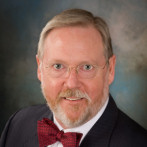 David Barnes ŌĆō BizWitz, LLC ŌĆō USA ŌĆō ŌĆ£More Digital RevolutionsŌĆØ David Barnes ŌĆō BizWitz, LLC ŌĆō USA ŌĆō ŌĆ£More Digital RevolutionsŌĆØ
David Barnes is Principal of BizWitz LLC and Chief Research Officer at the LCD TV Association. Mr. Barnes previously led operational valuation for Philips during the formation of LG Philips LCD Co., Ltd. After integrating operations, he provided expert advice to Philips Board of Management and to Joint Ventures management team for more than five years. After taking Joint Ventures public, Mr. Barnes became Vice President of Strategic Analysis at DisplaySearch, where he advised clients on restructuring, funding, and operating strategy. During that time, he intermediated successfully with European Commission on behalf of clients. With BizWitz, Mr. Barnes continues development of dynamic market models and strategic responses for companies up and down the flat-display supply chain.
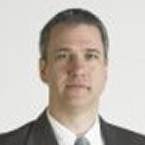 Don Carkner ŌĆō CH2M Hill ŌĆō USA ŌĆō ŌĆ£Large generation flat panel display manufacturing reviewŌĆØ Don Carkner ŌĆō CH2M Hill ŌĆō USA ŌĆō ŌĆ£Large generation flat panel display manufacturing reviewŌĆØ
Don Carkner has been involved in many aspects of the design, development and commercialization of solid state materials and optoelectronics for more than 20 years. He helped iFire Technology, an inorganic electroluminescent display start-up, develop strategic plans and process technology, market their initial products, and attract investment from global consumer product companies. At CH2M Hill, he provides manufacturing modeling, facility design, and technology development strategy expertise to clients in the LED, solar cell, and FPD industries.
 Fabrice Barbier ŌĆō Mulktek ŌĆō USA ŌĆō ŌĆ£Display and Touch Panel SolutionsŌĆØ Fabrice Barbier ŌĆō Mulktek ŌĆō USA ŌĆō ŌĆ£Display and Touch Panel SolutionsŌĆØ
Fabrice Barbier worked for several large multi-national companies like Sony, Philips, Motorola and Flextronics. He has a Master in Engineering. During his career, he lead several design organizations, responsible for the development of product like, (TV, VCR, Mobile Phone). Actually, he leads the technology and engineeringŌĆÖs group for Multek Display/Touch. He is member of the Engineering Council Group responsible to define the overall development strategy for Flextronics.
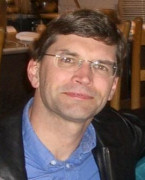 Gary Gibson ŌĆō HP ŌĆō USA Gary Gibson ŌĆō HP ŌĆō USA
Gary Gibson received a Ph.D. in condensed-matter physics from M.I.T. in 1988 under the direction of Dr. Robert Meservey and Professor Peter Wolf. His thesis work on Fermi liquid effects in superconductors provided the first direct measurement of Fermi-liquid renormalization in a solid. From 1988 to 1991, he worked as a postdoctoral researcher at the Center for Magnetic Recording Research at U. C. San Diego, where he studied the micromagnetics of thin films and sub-micron particles. In 1992 he became an Assistant Research Professor in the Arizona Research Labs at the University of Arizona. There he conducted research on the Schottky barrier properties of metal silicides used in infrared photodetectors. After joining Hewlett-PackardŌĆÖs central research laboratory in March of 1993, Gary initiated work on an ultra-high density memory device that utilized an array of microfabricated electron-emitters to read and write data on a phase-changeable diode structure. While at HP, he has also contributed to work on novel OLED devices. Gary is currently a Master Scientist in the Information Surfaces Lab of Hewlett Packard Laboratories, focused on creating new technologies for low-cost reflective display surfaces. He has authored over 50 refereed papers and is named as an inventor on more than 50 granted or pending patents.
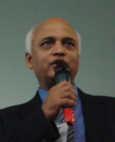 Gopalan Rajeswaran ŌĆō Moser Baer India Ltd ŌĆō India ŌĆō ŌĆ£Advances in Solar PhotovoltaicsŌĆØ Gopalan Rajeswaran ŌĆō Moser Baer India Ltd ŌĆō India ŌĆō ŌĆ£Advances in Solar PhotovoltaicsŌĆØ
Dr. Gopalan Rajeswaran (Raj) received the B.E, M.Tech and Ph.D. degrees in Electrical Engineering in 1976, 1978 and 1983 from the University of Madras, the Indian Institute of Technology and the State University of New York, respectively. He joined Brookhaven National Laboratory in 1982 as a staff scientist, and was involved in the early years of amorphous silicon solar cell development. In 1985 he joined Eastman Kodak Company as a group leader & technical coordinator within the semiconductor laser and LED fabrication group. In 1991, he became a senior staff engineer in the area of LED array printhead development and the manufacturing of writer subsystems for high-speed digital copiers and printers. In 1996 became the program manager of OLED technology development and commercialization at Eastman Kodak Company, where he established the Kodak-Sanyo joint development alliance that resulted in the world's first active matrix OLED displays. He served as the Vice President of SK Display Corporation, Gifu, Japan from December 2001 until January 2004. In 2003, Kodak introduced the first commercial digital cameras containing SKD manufactured AMOLED displays. From 2004 until 2007, he returned to Kodak and Kodak Japan as Vice President for Advanced Development & Strategic Initiatives in the OLED business unit where he was charged with promoting OLED business alliances among major display companies in Japan, Korea & Taiwan. Simultaneous with business responsibilities, Raj held the position of Senior Research Fellow in the Eastman Kodak Research Laboratories. In 2007, he joined Moser Baer Photovoltaic Ltd (New Delhi, India), a wholly owned subsidiary of Moser Baer India Ltd, as its President & Chief Technology Officer. From 2008, he assumed a broader technology role as the Group Chief Technology Officer of Moser Baer India Ltd and the CEO of Moser Baer Technologies Inc, a newly created business unit for nurturing new business initiatives in the fields of sustainable energy technologies. Over the past 25 years, Raj has been actively engaged in international conferences by delivering several invited seminars, tutorials and short courses in the fields of Photovoltaics and OLEDs. In 2009, he was elected as the Director of the India Chapter of SID and promoted to Senior Member grade.
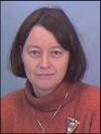 Ingrid Heynderickx ŌĆō Philips Research Laboratory and Technical University of Delft ŌĆō The Netherlands Ingrid Heynderickx ŌĆō Philips Research Laboratory and Technical University of Delft ŌĆō The Netherlands
Ingrid Heynderickx received her PhD degree in physics at the University of Antwerp in December 1986. In 1987 she joined the Philips Research Laboratories in Eindhoven, and meanwhile worked in different areas of research: optical design of displays, processing of liquid crystalline polymers and functionality of personal care devices. Since 2005 she is research fellow in the group Visual Experiences, where she is heading the project on Visual Perception of Display and Lighting Systems. She is member of the Society for Information Displays (SID), and for the SID, she was chairman of the Applied Vision subcommittee, and currently is guest editor for a special issue on Display Characterization for the Journal of the SID. In 2005, she is appointed Guest Research Professor at the Southeast University of Nanjing (China) and Part-time Full Professor at the University of Technology in Delft (the Netherlands).
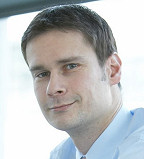 Jan Birnstock ŌĆō Germany ŌĆō ŌĆ£PIN OLED architectures for display and lighting applicationsŌĆØ Jan Birnstock ŌĆō Germany ŌĆō ŌĆ£PIN OLED architectures for display and lighting applicationsŌĆØ
Jan Birnstock studied Physics at Leipzig and Edinburgh University with the focus on physical chemistry, experimental physics and semiconductor physics. He completed his PhD at the University of Erlangen-Nuremberg and Siemens AG in 2003. Subject of his PhD thesis was ŌĆ£Screen printing of displays based on conjugated polymersŌĆØ.
He joined Novaled in August 2003 where he became physics group leader in 2004. In 2006, he was appointed Vice President Technology and in 2010 Leader of the Business Line Technology and Product. In this position, he is responsible for the initiation, management and supervision of customer projects as well as the development of new products. In the past 10 years, he contributed as inventor to more than 40 patent families.
 Kurt Petersdorff - Liquavista ŌĆō The Netherlands ŌĆō ŌĆ£E-paperŌĆØ Kurt Petersdorff - Liquavista ŌĆō The Netherlands ŌĆō ŌĆ£E-paperŌĆØ
Kalil Kalantar ŌĆō Nippon Leiz ŌĆō Japan ŌĆō ŌĆ£Optics and optcal layers for BLUsŌĆØ
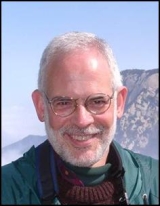 Kenneth I. Werner ŌĆō Insight Media ŌĆō USA ŌĆō ŌĆ£The avalanche of 3D displaysŌĆØ Kenneth I. Werner ŌĆō Insight Media ŌĆō USA ŌĆō ŌĆ£The avalanche of 3D displaysŌĆØ
Kenneth I. Werner is Senior Analyst for Insight Media, which provides display intelligence through newsletters, research reports, conferences, and consulting services to companies in the information display and related industries, and to companies using, integrating, and selling displays. He is the founder of Nutmeg Consultants, whose personnel and programs became part of Insight Media in 2005, and was the Editor of Information Display Magazine from 1987 to 2005. Currently, he is Editor of Insight MediaŌĆÖs Display Watch and HDTV Retailer. Mr. Werner has become recognized as an authority on the display industry. He regularly addresses technical and trade organizations in North America, Europe, and Asia, and is routinely consulted by brokers, analysts, members of the international press corps, and companies entering or repositioning themselves in the industry. He speaks frequently with senior corporate and technology executives of large, mid-sized, and small display-related companies in Asia, Europe, and North and South America, as well as government officials and academic researchers. At BRDisplay II (July 2004, Recife, Brazil), he served as a consultant to the working groups developing a national strategy for the growth of display-related industry in Brazil and wrote the introduction to their report. Mr. Werner began his career as a semiconductor device design engineer for RCA. He holds a B.A. in physics from Rutgers University and an M.S. in solid-state physics from the University of North Carolina at Chapel Hill, and has taken graduate management courses at the University of Connecticut. He has been an active participant in the display industry since 1987. In the last few years Mr. Werner has given keynote presentations at MicroDisplay 2001 (Westminster, Colorado), LCD/PDP International 2001 (Yokohama, Japan), and InfoDisplay VI (October 2003, Fortaleza, Brazil), and invited presentations at the winter Consumer Electronics Show 2002 (Las Vegas, Nevada), the International Display Manufacturing Conference 2002 (Seoul, Korea), the SID Korea Chapter Seminars (August 2002, Seoul, Korea), the Liquid Crystal Institute (November 2002, Kent, Ohio), and BRDisplay I (April 2004, Campinas, Brazil). His most recent invited paper at an international conference was ŌĆ£Current Strategies for Eliminating Motion Blur in LCD Television,ŌĆØ presented at IMID 2005 in Seoul, Korea. He was one of the referees for the Display Invention Competition held in August 2003 in Korolev, Russia, and he moderated the evening panel sessions at ASID 2004 (Nanjing, China) and ADEAC 2004 (Fort Worth, Texas). Mr. Werner is a founding partner of Chorus Consulting, a government-registered Korean company dedicated to forging mutually productive technology and business relationships among Asian, American, and European display-related companies. He is a member of the Society for Information Display and IEEE, and is Chairman of the Advisory Board for the award-winning IEEE Circuits & Devices magazine.
Manuel Steidle ŌĆō CERTI ŌĆō Brazil ŌĆō ŌĆ£Reverse innovation, emerging markets as the development environment of global productsŌĆØ
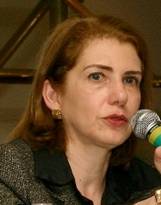
Margarida Baptista ŌĆō BNDES ŌĆō Brazil ŌĆō ŌĆ£Opportunities for displays in BrazilŌĆØ
Professor at the Institute of Economics of the State University of Campinas and member of the "Technology and Industrial Economics Center" of Unicamp. Since the First half of the 80ŌĆÖs has developed and published several studies on technology, industrial policy electronics and informatics Industry. Currently she is advisor to the president of the Brazilian Development Bank.
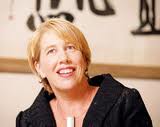
Mary Lou Jepsen ŌĆō Pix Qi ŌĆō USA ŌĆō ŌĆ£Pixel QI: How it started and what followedŌĆØ
Mary Lou Jepsen (born 1965) was the founding chief technology officer of One Laptop per Child (OLPC), an organization whose mission is to deliver low-cost, mesh-networked laptops en masse to children in developing countries.
From 2003 until the end of the 2004, she was the chief technology officer of IntelŌĆÖs Display Division.
In January 2005, Jepsen joined Nicholas Negroponte to lead the design, partnering, development and manufacture of the laptop, and for the entire first year of the effort was the only employee of One Laptop per Child [OLPC].
By the end of 2005, she had completed the initial architecture, led the development of the first prototype (which UN Secretary General Kofi Annan unveiled at a UN summit), and signed up some of the world's largest manufacturers to produce the XO-1. By the end of 2007 she had led the laptop through development and into high volume mass production.
At OLPC, notably, Jepsen invented the laptop's sunlight-readable display technology and co-invented its ultra-low power management system - and - has transformed these inventions into high volume mass production rapidly. The XO laptop is the lowest-power laptop ever made, and the most environmentally friendly laptop ever made. The laptop can sustain 5 foot drops, is mesh networked extending the reach of the network by letting signals hop from laptop to laptop.
After 3 years with OLPC, In early 2008 she left OLPC to start a for-profit company, Pixel Qi, to commercialize some of the technologies she invented at OLPC. Her premise: the CPU is no longer important, nor is the operating system. Portables are all about the screen. Typical laptop screens run for about $100 (compared to the CPU which at the low end has hit $10), cause the largest drain on the battery, are difficult to read for hours on end, don't have integrated touchscreens and electronics, and aren't sunlight readable. She has started a new company, Pixel Qi, to move forward on screen innovations in these areas using the existing LCD factories as is, but with clever conceptual design changes that allow her company to move from idea to high volume mass production in less than a year, as she did with the screen for the OLPC laptop.
For her work in creating the laptop Time Magazine named her to its 2008 list of the 100 most influential people in the world.
 Paul Gagnon ŌĆō DisplaySearch ŌĆō USA - ŌĆ£Global Trends in the Flat Panel TV MarketŌĆØ Paul Gagnon ŌĆō DisplaySearch ŌĆō USA - ŌĆ£Global Trends in the Flat Panel TV MarketŌĆØ
Paul Gagnon is Director of North American TV Research at DisplaySearch. Paul has over 12 years of experience in the Consumer Electronics industry in retail, manufacturing and market research, adding value and insight to DisplaySearchŌĆÖs industry leading analysis. Paul is primarily involved with TV market tracking, forecasting and analysis as well as consulting and conferences. Prior to joining DisplaySearch, Paul worked as the Senior Marketing Analyst for Hitachi America LTDŌĆÖs Home Electronics Division, forecasting and analyzing volatile TV and video market trends. His responsibilities included weekly and monthly market analysis, competitive information tracking, and extensive involvement in product development and strategic planning. He was also responsible for developing and implementing retail sales incentive promotions. In addition, Paul was a member of the CEA Video Division Market Research Committee.
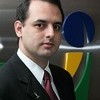 Pedro Alem ŌĆō ABDI ŌĆō Brazil ŌĆō ŌĆ£Roadmap for high tech industry in BrazilŌĆØ Pedro Alem ŌĆō ABDI ŌĆō Brazil ŌĆō ŌĆ£Roadmap for high tech industry in BrazilŌĆØ
Engenheiro Civil graduado pela USP, com especializa├¦├Żo em Ger├¬ncia de Projetos pela FGV-RJ e mestrado em Engenharia de Produ├¦├Żo, com tema ligado a pol├Łticas p├║blicas para a ind├║stria eletr├┤nica, pela UFRJ.
Foi chefe dos Departamentos de Planejamento da ├ürea de Ind├║strias e de Tecnologia da Informa├¦├Żo e Servi├¦os da FINEP.
Atualmente exerce a fun├¦├Żo de Especialista S├¬nior na ABDI, respons├Īvel pelas ├Īreas ligadas ├Ās tecnologias da informa├¦├Żo e comunica├¦├Żo (TICs). Est├Ī envolvido com a Pol├Łtica Industrial, Tecnol├│gica e de Com├®rcio Exterior (hoje Pol├Łtica de Desenvolvimento Produtivo) desde 2003. Exerce tamb├®m as fun├¦├Ąes de membro da Comiss├Żo de Coordena├¦├Żo do Programa CI-Brasil, membro vogal do Conselho Deliberativo do F├│rum para Implementa├¦├Żo do SBTVD-T e dos Grupos de Coordena├¦├Żo das A├¦├Ąes para implementa├¦├Żo do SBTVD-T do MDIC e do MCT. ├ē coordenador do subgrupo B - coopera├¦├Żo para a ind├║stria eletr├┤nica - do Grupo de Trabalho Conjunto (GTC) Brasil-Jap├Żo para implenta├¦├Żo do SBTVD-T.

Richard R. Chang ŌĆō Beijing University ŌĆō China ŌĆō ŌĆ£LCD Flat panel industry and its development policy in ChinaŌĆØ
Dr. Richard R. Chang received a BS in Mechanical Engineering in 1970, MS in Engineering Science in 1974 and PhD in Electrical Engineering in 1986, from the National Taiwan University, the State University of New York at Buffalo and the Southern Methodist University respectively. He worked from 1974 until 1977 as Engineer and Staff Engineer for Union Carbide in Tonawanda, New York. From 1977 to 1997 he was Sr. Engineer, Module Manager, and then Project Manager at Texas Instruments. From 1977 until 2000 he was President of the World Semiconductor Manufacturing Company (WSMC), Taiwan. From 2000 until 2009 Dr. Richard R. Chang was President and CEO of the Semiconductor Manufacturing International Corporation. Currently he is Visiting Professor at the Beijing University, China. He had an exceptionally brilliant professional record winning numerous awards such as the International Scientific and Technological Cooperation Award, issued by the State Council of the PeopleŌĆÖs Republic of China in 2005, and the Industry Outstanding Contribution Award, from SEMI China in 2008.
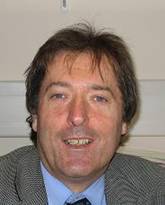
Robert Withnall ŌĆō Brunel University ŌĆō UK ŌĆō ŌĆ£Phosphors for displays and lampsŌĆØ
Professor Robert Withnall takes up the position of Chair in Materials Science and Engineering at Brunel. He has substantial expertise in performing vibrational and electronic spectroscopies, and he has published close to 200 research papers in international refereed journals in these areas. He has regularly given invited lectures on phosphors and the applications of laser Raman spectroscopy to a range of international audiences. He is also Adjunct professor in Chemistry at the University of Syracuse, New York.
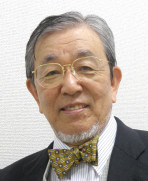 Shunsuke Kobayashi ŌĆō Tokyo University of Science ŌĆō Japan ŌĆō ŌĆ£Displaying High Quality Images on A Field Sequential Color LCDs Using Narrow-gap TN and PSV-FLC ModulesŌĆØ and ŌĆ£Optics of LCDs: Interference of LIght and Wide Viewing Angles TechnologyŌĆØ Shunsuke Kobayashi ŌĆō Tokyo University of Science ŌĆō Japan ŌĆō ŌĆ£Displaying High Quality Images on A Field Sequential Color LCDs Using Narrow-gap TN and PSV-FLC ModulesŌĆØ and ŌĆ£Optics of LCDs: Interference of LIght and Wide Viewing Angles TechnologyŌĆØ
Director, Liquid Crystal Institute, TUS-Yamaguchi
Shunsuke Kobayashi was born August 18, 1932 in Saitama, Japan. He graduated in 1955 from the Tokyo Science University, Tokyo, in 1961 received master degree in Applied Physics from graduate school of the University of Tokyo and 1964 PhD degree in Electronic Engineering from the same university.
He began working first as a research Fellow and assistant at the Science University of Tokyo in 1955 becoming a member of staff of the Institute of Physical and Chemical Research, Saitama, Japan in 1964. Then in 1973 he was an associate professor of Electronic Engineering at TUAT and finally a Professor. In 1996 he became professor of Electronic Engineering and in 1998 became director of Liquid Crystal Institute, TUS-Yamaguchi.
Meanwhile Shunsuke Kobayashi took part in academic society services being regional vice president, Asia, Society for Information Display (SID). From 1992 to 1994 he also was vice president for the International Liquid Crystal Society; from 1992 to 1996 was president of the Japanese Liquid Crystal Society from 1999 to 2000. Shunsuke Kobayashi was also chairman of the 18th International Liquid Crystal Conference from 1998 to 2000.
He was awarded for his work in 1987 from the Society for Information Display (SID), 1995 with the Jan Rajchman Prize (SID), 1996 Tokyo Metropolitan GovernorŌĆÖs Prize in 2000 from the Fellow, Institute of Electronics, Information and Communication Engineers (Japan), 2001 with the Ministry of Education and Science Prize, Japanese Government and 2002 became honored member of International Liquid Crystal Society.
 Tom Munters - Phillips - Belgium - "OLED lighting: opportunities and challenges for market introduction" Tom Munters - Phillips - Belgium - "OLED lighting: opportunities and challenges for market introduction"
Experience in project management, innovation management, product development, multi-company complex development projects and system architectures. During my MBA thesis I worked on strategic repositioning of an innovative product leader. Like to realize things in challenging, new, immature environments. Always like to use a multi-disciplinary approach to bring innovative products successfully to the market.
|